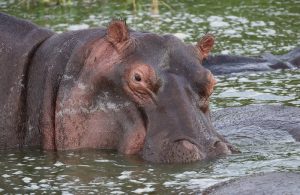Game drives Serengeti National Park
Game drives in Serengeti Park, Tanzania, are one of the most iconic safari experiences in the world, offering an opportunity to witness Africa’s abundant wildlife in a vast, open savanna landscape. Here’s what you can expect from game drives in the Serengeti:
1. Types of Game Drives
Morning Game Drives:
- Timing: Typically start at dawn (around 6 AM) and last until mid-morning.
- What to Expect: This is one of the best times to spot wildlife, as animals are more active before the heat of the day sets in. Lions, cheetahs, and leopards are often seen hunting at this time.
- Highlight: Predators are more likely to be on the move, and birdlife is active.
Evening Game Drives:
- Timing: Begin in the late afternoon (around 4 PM) and go until dusk.
- What to Expect: As the sun sets, the temperature cools, and animals become more active again. It’s also a good time to spot predators returning to hunt. The lighting during this time makes for fantastic photography.
- Highlight: The sunset over the Serengeti is breathtaking, with vibrant colors and silhouettes of acacia trees.
Full-Day Game Drives:
- Timing: These cover the entire day, starting at dawn and continuing through the afternoon.
- What to Expect: You’ll carry a packed lunch and explore deeper into the park, reaching more remote areas. This is a great option if you’re targeting specific wildlife sightings, such as river crossings during the Great Migration or certain predators.
- Highlight: Full-day drives allow you to explore more distant areas like the Seronera Valley (central Serengeti) and Mara River (northern Serengeti) during migration season.
Night Game Drives:
- Timing: After dark (available only in private reserves or camps in the outskirts of the park).
- What to Expect: Night drives offer a rare chance to see nocturnal animals, like leopards, hyenas, and bush babies. It’s a completely different perspective, with the use of spotlights to catch the animals’ eyes.
- Highlight: You might witness the elusive predators on the prowl or the drama of night hunts.
Hot Air Balloon Safaris:
- Timing: Early morning, just before dawn.
- What to Expect: While not technically a game drive, this is a unique way to experience the Serengeti from the air, offering a bird’s-eye view of the wildlife and landscapes. It’s especially spectacular during the Great Migration.
- Highlight: A serene, panoramic view of the Serengeti, followed by a champagne breakfast on the plains.
2. Best Time for Game Drives
- June to October: This is the dry season and the best time for game drives, as wildlife congregates around water sources, and the grass is short, making it easier to spot animals.
- January to March: Another great time, particularly in the southern Serengeti around Ndutu, when the wildebeest calve, attracting predators.
- April and May: The long rains make some roads impassable, but it’s the low season, so fewer tourists and lush landscapes can make for a more peaceful experience.
3. Wildlife You’ll Encounter
- The Big Five: Lion, elephant, buffalo, leopard, and rhinoceros (though rhinos are more common in the Ngorongoro Crater).
- The Great Migration: One of the most famous events in the Serengeti, where over 1.5 million wildebeest, zebras, and gazelles migrate in search of greener pastures. The best months to see river crossings are July to October in the northern Serengeti (Mara River).
- Cheetahs and Leopards: Especially in the Seronera Valley (central Serengeti), which is rich in predators.
- Birdlife: The Serengeti is home to over 500 species of birds, from ostriches to brightly colored lilac-breasted rollers.
4. Key Areas for Game Drives
- Seronera (Central Serengeti): Known for year-round predator sightings, especially big cats like lions and cheetahs.
- Western Corridor (Grumeti River): Best during the dry season and for seeing the Great Migration’s Grumeti River crossings.
- Northern Serengeti (Mara River): Famous for dramatic wildebeest crossings of the Mara River from July to October.
- Southern Serengeti (Ndutu Area): Known for wildebeest calving between January and March, attracting large numbers of predators.
5. Tips for Game Drives
- Start Early: Wildlife is most active at dawn and dusk, so prioritize morning drives for the best sightings.
- Bring Binoculars: The Serengeti’s vastness means animals can sometimes be far off, so good binoculars enhance the experience.
- Photography: Have a camera with a good zoom lens (at least 200-400mm) for wildlife photography. The golden light during early morning and late afternoon is ideal for photos.
- Dress in Layers: Mornings and evenings can be cool, while midday can be hot, so dress accordingly.
6. Other Activities
- Walking Safaris: Available in some areas outside the core of the Serengeti, these are led by guides and give a more intimate experience of the landscape.
- Cultural Visits: You can also combine game drives with cultural experiences, like visiting the nearby Maasai villages.
Game drives in the Serengeti are truly spectacular, offering one of the best chances to see Africa’s most iconic wildlife in a stunning natural setting. Whether you’re after the thrill of predator sightings or the sheer spectacle of the Great Migration, a Serengeti safari provides an unforgettable experience. Game drives in Serengeti Park




